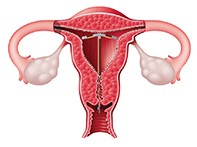Peer Reviewed
Feature Article Obstetrics and gynaecology
A practical guide to contraception. Part 2: Long-acting reversible methods
Abstract
Women using long-acting reversible methods of contraception – the contraceptive implant, copper and hormonal intrauterine devices and the contraceptive injection – have a lower risk of unintended pregnancy compared with those using oral contraceptive pills, the vaginal ring or barrier methods.
Key Points
- Long-acting reversible methods of contraception (LARCs) are acceptable to women and can offer cost-effective ‘fit and forget’ contraception.
- The longest acting LARCs, the contraceptive implant and intrauterine devices (IUDs), have very similar efficacies in typical and perfect use.
- There are few absolute orrelatively strong contraindications to LARCs, and few serious risks associated with their use.
- The efficacies of depot medroxyprogesterone acetate injections and IUDs are not affected by the concurrent use of medications that induce liver enzymes.
- Use of LARCs has not been shown to have a long-term effect on fertility once the method has been stopped.
- Include a discussion of the benefits of LARCs when women present for renewal of oral contraceptive pill or vaginal ring scripts.
Purchase the PDF version of this article
Already a subscriber? Login here.

